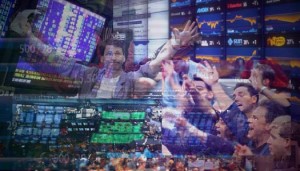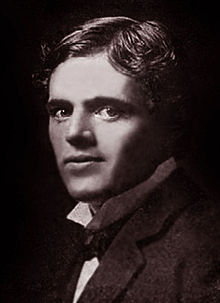By John Gilstrap
I’m really looking forward to Bouchercon this year, as I look forward to it every year. Last year, San Francisco provided a terrific backdrop for the conference, but I have to say that in my experience, Midwest conferences somehow work out better. Perhaps it’s because there are fewer distractions, and therefore more people hanging around the conference hotel.
My Big Boy Job takes me to St. Louis a lot—at least twice per year. I don’t pretend to know the city well, but as a creature of habit, there are certain haunts that are particularly worthy of note:
JF SanFilippo’s Restaurant. If you like down home Italian food, complete with a full bar and a great wine list, this is a place you’ve got to visit. Located at 705 North Broadway, it’s just a few blocks from the conference hotel, an easy walk. The food is reasonably priced, and the owner, Joe, is a terrific guy. It’s a good-size place, but reservations are a good idea. (314) 621-7213.
Carmine’s Steak House is a terrific high-end beef restaurant, though compared to New York or DC, the menus is very reasonably priced. They’ve got an impressive wine list, too. Attached to the Drury Plaza Hotel at 20 South Fourth Street—virtually across the street from Busch Stadium—it has a warm ambience and a terrific menu. Be sure to try their toasted ravioli appetizer. The restaurant is walkable from the conference hotel, but allow fifteen minutes to get there on foot. While on the small side, it never feels cramped, so you’d be wise to make reservations here, too. (314) 241-1631.
If you’re a scotch drinker, the bar that’s attached to Carmine’s Steak House has one of the best selections of single malts I’ve ever found anywhere.
If you’ve never visited the Gateway Arch, you really ought to, if only to experience one of the weirdest elevator rides ever. The underground museum there is okay, but it used to be better.
Bouchercon. If you find yourself truly with nothing better to do, you might even consider coming to one of my panels. Thursday morning at 10:00, Kathryn Kennison will be wrangling—er, moderating—Val McDermid, Parnell Hall, Charles and Caroline Todd and me on a panel called, “The Mermaids Singing.” I think it’s loosely about Magna Cum Murder, but given the players, lord knows where it’s going to go.
On Saturday afternoon at 1:00, I’ll be moderating a panel called “Beyond Here Lies Nothing: The Challenges of Writing Your Next Book” which will feature authors John Billheimer, Jonathon King, David Levien, Lawrence Light and Jonathan Santlofer. I intend to lead the discussion in the direction of much of the stuff we talk about here in The Killzone: the future of the industry, eBooks, and lots of other stuff.
If you can’t make it to one of my panels, I’m pretty much a sure thing in the bar in the evenings. Y’all come and have a great time!
Monthly Archives: September 2011
Have Books Been Distilled Down to a Commodity? Will Any Book Do?
The Great MMPB Vanishing Act
By Joe Moore
In a recent article in The New York Times, it was revealed that according to a survey last month from the Association of American Publishers, mass-market paperback sales have decreased by 14% since 2008. According to the article, there are a couple of factors responsible. Heavily discounted hardcover pricing from the chain stores and online sellers have contributed. Second, the increase in the trade paperback format as an alternative. Although a soft cover book, the trade paperback is larger, can command a higher price than the MMPB, and is usually a better quality product from a production standpoint. A third factor is the rapid rise of the e-book’s popularity, which is priced at or below MM prices and aimed directly at the MMPB reader as an attractive alternative.
The mass-market paperback was developed in the late 1930s to create an efficient, affordable, and highly portable form of printing books for the masses. One of the first to succeed in the venture was Simon & Schuster which created the Pocket Books imprint. It was so successful that the term “pocket book” became synonymous with paperback. Two of the most notable books published in pocket editions were James Hilton’s Lost Horizon and Pearl Buck’s The Good Earth. Both appeared in paperback in 1939. A number of companies followed after Pocket Book’s concept including Ace, Dell, Bantam and Avon.
Today, according to the NYT’s article, many big box stores and national chains are gradually shrinking their shelf space for MMPBs and using the space for more hardcovers and trade paperbacks. These include Hudson, Barnes & Noble, and Wal-Mart.
The slow vanishing act of the MMPB is another sign of a changing marketplace for the publishing industry. Once a devoted reading fan purchases a device on which to read electronic publications, the advantages of e-books over MMPBs are compelling. These include similar pricing, portability, convenience, and the immediate availability of the book as opposed to waiting a year for the paperback version of a hardcover.
Next time you walk into your favorite drugstore, airport, mall store, or newsstand, check for yourself. It doesn’t take long to realize that the MMPBs are disappearing right before your eyes.
If you’re an author and are being published as original mass market, what is your agent or editor telling you about the future? Are you going to be converted over to trade format or e-book only? And for readers, are you still buying mass market paperbacks? New? Used? Or have you made the transition to some other format?
What’s your story’s DNA?
Recently I found a fun new site called Booklamp–it helps you find new books by comparing and contrasting the content of books you enjoy, similar to the way Pandora.com helps music lovers find new music. To quote Booklamp:
“We’re attempting to help you find books with similar themes and writing style to books you’ve enjoyed in the past – comparing elements like Description, Pacing, Density, Perspective, and Dialog – while at the same time allowing you to specify details like… more Medieval Weapons.”
Booklamp identifies and parses the “story DNA” of various books, then uses that information to help you find similar stories. You can search for books by Story DNA, Book Title, Author, or Genre.
As an experiment I searched for books with DNA similar to Hostage Zero by our own John Gilstrap. Booklamp suggested matches to “similar” books by various authors, including Christopher Reich, Lisa Unger, Anne McCaffrey, Louis L’Amour, and even William Faulkner.
Booklamp claims to be advertiser independent, which means you won’t have your results filtered through marketing budgets. This means that mid-listers and newbies will have a fighting chance to turn up in results.
Booklamp is actively seeking publishers to sign on to the project right now–many publishers (and therefore authors) are not represented. But I’m hoping the project will catch fire.
Check it out, and let us know what you think. Is this something you would use, as a reader or writer?
Fear and the Ordinary
When Did You Decide to Become a Writer?
James Scott Bell
Twitter.com/jamesscottbell
One Minute Mystery
I have what my friends in Louisiana would call the “red ass” about something and maybe you can help me out. This is a real world occurrence, one which may have passed under your radar, and I am quite frankly puzzled as to the official explanation. I am going to present what has occurred as a writing exercise, in the form of a hypothetical situation, and maybe one of you can explain to me how such a thing could occur. Maybe you can see something that I can’t, and in the course of an imaginative whimsy explain to me what I seem to be missing.
Here we go: a woman was found dead, hanging from a second-floor balcony, a noose around her neck. Her hands were tied tightly behind her back. Her feet were bound as well. I also note, as an element of distraction, that she was naked. A relative who had spoken with her the evening before the discovery of her body stated that the deceased did not seem depressed or despondent. Her death, after a six-week investigation, was ruled a suicide by the local sheriff‘s office. The victim supposedly bound her hands and feet, tied a rope around her neck, and hung herself from the balcony. In that order.
Assuming, arguendo, that the ruling is correct, how was this unfortunate woman able to do this? Any theories among you mystery aficionados?
Note: Stephen King, for his novel GERALD’S GAME, actually had his family handcuff him to a bedpost in order that he could determine whether and how he could in fact free himself from the situation which he devised for his protagonist in the novel. I don’t want you to follow suit in attempting to solve my puzzle, no matter what sort of day you are having. To be honest with you, I just tried to do it and could not. I couldn’t get past tying my feet together. That was a neat trick in itself, since I haven’t seen them since 2001.
There is a prize for the best answer, by the way, which will be awarded at my discretion to the winner of my choice. Start your engines and shake your heads.
Meet My Friend Brett Battles
Every now and then you run into the new writer who pisses you off. Here you’ve been churning out reliable thrillers on a reliable schedule, and this kid shows up who has it all: great characters, great plot, great pacing. He’s the punk who wanders into town with a pea shooter on his hip who can out-shoot every gunslinger in town.
I’ve only met a few of these wunderkinds in my time, and Brett Battles is one of them. We first ran into each other at the inaugural ThrillerFest in Scottsdale, Arizona. His reputation preceded him, and in spite of my heartfelt desire to hate him, he even turned out to be a nice guy. Dammit. He’s had his ups and downs in the blender that is the publishing industry, but he’s never lost his sense of humor, and he’s never lost his sense of who he is. In my book, praise doesn’t come higher than that. The fact that he’s as good a writer as he is continues to piss me off, but that’s just my curmudgeonly side talking. In reality, folks don’t come much better than Brett. I’m honored to dedicate my space in the Blogosphere to him today. By the way, Brett periodically posts on his blog The Independent Writer. For a limited time, Brett has put the Kindle and Nook versions of his novel LITTLE GIRL GONE on sale for only 99¢.
PICTURES OF WHO
By Brett Battles
The picture is of two people. The man in the center looks tall, maybe six feet. But the photograph cuts him off at the waist, so there’s no way to tell for sure. He’s smiling in a way that you know he’s not just putting it on for the camera. He Caucasian face looks even whiter than it probably is because of his dark hair and matching goatee. You can’t really tell what he’s wearing. A dark sweater that zips up in the front, perhaps, but the background is black, so his clothes quickly fade into it.
Standing next to him with an arm thrown loosely over his shoulder is a woman. She is impossibly beautiful. Not runway model beautiful, she is real and she is stunning. The smile on her face isn’t so much a smile as a knowing smirk. Her eyes, half closed, match her mischievous grin. She is of African descent, her skin darker than some, and lighter than others. Above the right corner of her lip is a dark mole Marilyn herself would have killed for. Her hair is straight, though it, too, blends into the background and gets lost. The only parts you can see are where it passes over her ear, and the strands that drape down her neck and onto her partially bare shoulder.
It’s a party, or a night at a club, or someplace similar. Wherever it is, it’s easy to see they are enjoying themselves. The rest of the photo is merely shadows on shadows in the background. Could be people, could be things, or could be stains that accumulated on the photo before I found it.
I don’t know these people. I’ve never seen them in my life. And yet, the photography—a Polaroid—hangs on my wall, protected now in a zip lock bag that’s held in place by a piece of tape.
I found the photo at least a year ago when I was out for one of my frequent walks. It was lying on the ground, half hidden by a few leaves at the edge of the sidewalk. I almost passed it by before I realized what it was.
How long it had been there? I don’t know. But Polaroids fade in the sun, and this one still had most of its color intact. Still, it’s life, post whoever had dropped it, hadn’t been an easy one. Some of the white on the frame in the upper left corner had flake off, revealing the silver backing below. The rest of the frame was smudged and dirty, like it had been kicked around for a while.
I stopped where I’d found it, and stared at the image while cars drove by on the street a dozen feet away. I didn’t care about the traffic, though, or the couple of people who walked passed. I only cared about the two people in the photo, the man and the woman.
There was a story there. A story I needed to tell. What I didn’t know yet was what that story was. So I carried the photo home, and I put it in that bag, and I taped it to my wall.
A few times every week I look at it. I study the faces. I try to listen in case they have something they want to say. There is a story here. A story I do need to tell. I don’t know what it is yet, but it will come.
It always comes.
Inspiration is out there for all of us, doesn’t matter if you’re a writer or not. So where have you found unexpected inspiration?
Too Many Voices In My Head
Today I’d like to discuss multiple points of view, or what I like to call too much of a good thing. I’m currently working on a Young Adult novel with six characters. Initially, my goal was to give each character a voice in the story. I wanted to try and jump around betw een them, maintaining a close third person throughout (which tends to be my default setting for novels).
een them, maintaining a close third person throughout (which tends to be my default setting for novels).
But it’s just not working. Fifty pages in, it’s a big mess. The problem is that when you see a situation from too many perspectives, it tends to get muddied, and not in a good way. The voices lack clarity, and the story becomes convoluted.
It’s funny, because I’ve done something similar before and never had this problem. But what I realized was that in other books, some characters enjoyed the vast majority of scenes, while the reader only saw through the eyes of others for a few critical pages.
With my latest book, that approach hasn’t been working. I’ve been forced to acknowledge that I need to narrow the field, staying inside the heads of a handful of my cast of characters. The rest can be seen through their eyes, but leaping into their minds is too jarring.
Most Young Adult novels are written in first person. That always helps the reader connect with the hero or heroine immediately on a base level. A first person POV wouldn’t work with my particular story, but I can see the appeal. It would be far easier to stick view everything through one character’s eyes. The alternative can be far more complicated and challenging.
Adding to the issue is the fact that this is intended to be a shorter book than some of my others, weighing in at a mere 50,000 words-which doesn’t provide much room for character development in the first place. Harder still if I’m bouncing around every few pages between my motley crew.
My last book was comparatively easy, with only two characters to play off of. I’m feeling like I set myself up for a fall with this one, but at this point I’m far enough along in the story that I’m loath to start cutting people out of the novel.
So when it comes to telling this particular story (and really, any story), here’s what I’ve arrived at:
- Keep it simple. If you have a large cast, select the three or four main players and stick with them.
- Your weakness could be a strength. The characters whose heads you don’t peek inside could be hiding something specific that will affect the outcome of the story. Staying out of their POV can add to the mystery.
- My editor suggested trying an omniscient narrator, but I tend to find that off-putting. I might play around with telling the story in alternating third and first POVs, however, to see if that helps resolve the problem.
I’m open to any and all other suggestions, though.



